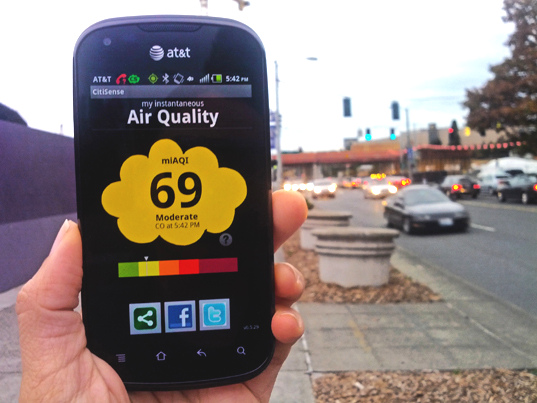
The University of California’s computer scientists have developed a portable box like sensor, called CitiSense that will soon enable general people to receive real time data of air pollution based on their location on their handsets.
The basic purpose of developing CitiSense was to allow people to check the quality of air around them simply by deploying this portable device that will then transmit the feedback on air pollution by portraying the levels of carbon monoxide, nitrogen dioxide and ozone.
This information will remain quite helpful especially for those who are suffering from asthama or any other chronic conditions. This sensor will also inform users about the air conditions that have an increased effect on physical exertion like runners or those who exercise.
The interesting thing about CitiSense is that not only does it transmits air pollution data to the phones that users are carrying their device but it also relays the information to everyone within its sensor’s range.
In addition to this, CitiSense can transmit data of pollution by using air quality ratings of the Environmental Protection Agency (EPA). This will allow people to gauge their daily activities by checking the range that can be between Green (safe) and Purple (unsafe). The researchers at the University of California believe that this system could be used to give a much more comprehensive information collection system on air pollution in urban areas as compared to EPA’s current system.
Additionally, the data collected from this system can also be transmitted to personal computers and other devices for a better understanding of pollution patterns in urban areas by deploying CitiSense to main transportation routes.
The manufacturing cost of sensors is quite high, as each unit require around $1,000 to make, but the good news is that most of the computer software and technology has already been developed therefore, the costs have gone down. Hopefully now this system will make people feel more safe from pollution, as this project is looking to make ‘invisible visible’.
Source: PSFK
Photo: Inhabitat